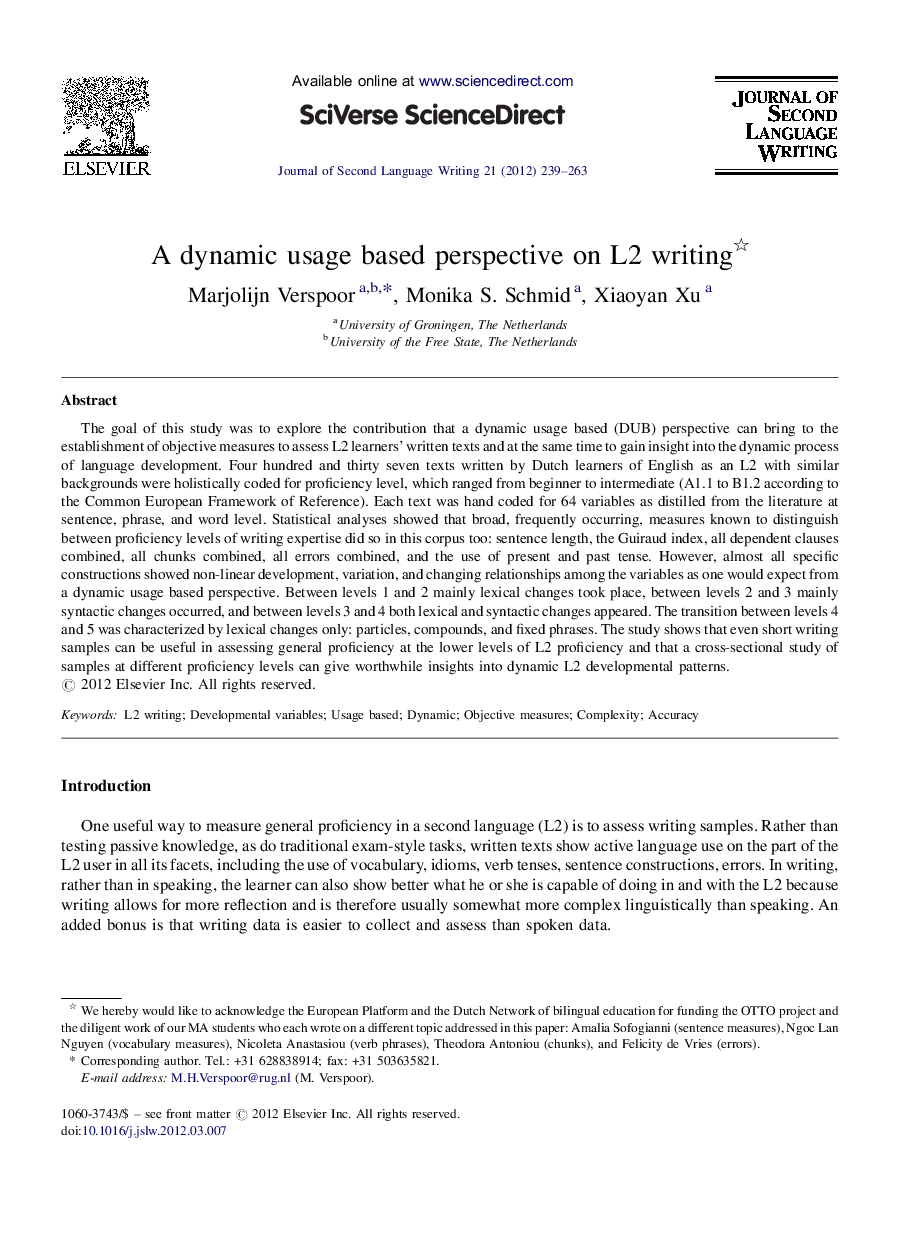| Article ID | Journal | Published Year | Pages | File Type |
|---|---|---|---|---|
| 364110 | Journal of Second Language Writing | 2012 | 25 Pages |
The goal of this study was to explore the contribution that a dynamic usage based (DUB) perspective can bring to the establishment of objective measures to assess L2 learners’ written texts and at the same time to gain insight into the dynamic process of language development. Four hundred and thirty seven texts written by Dutch learners of English as an L2 with similar backgrounds were holistically coded for proficiency level, which ranged from beginner to intermediate (A1.1 to B1.2 according to the Common European Framework of Reference). Each text was hand coded for 64 variables as distilled from the literature at sentence, phrase, and word level. Statistical analyses showed that broad, frequently occurring, measures known to distinguish between proficiency levels of writing expertise did so in this corpus too: sentence length, the Guiraud index, all dependent clauses combined, all chunks combined, all errors combined, and the use of present and past tense. However, almost all specific constructions showed non-linear development, variation, and changing relationships among the variables as one would expect from a dynamic usage based perspective. Between levels 1 and 2 mainly lexical changes took place, between levels 2 and 3 mainly syntactic changes occurred, and between levels 3 and 4 both lexical and syntactic changes appeared. The transition between levels 4 and 5 was characterized by lexical changes only: particles, compounds, and fixed phrases. The study shows that even short writing samples can be useful in assessing general proficiency at the lower levels of L2 proficiency and that a cross-sectional study of samples at different proficiency levels can give worthwhile insights into dynamic L2 developmental patterns.
